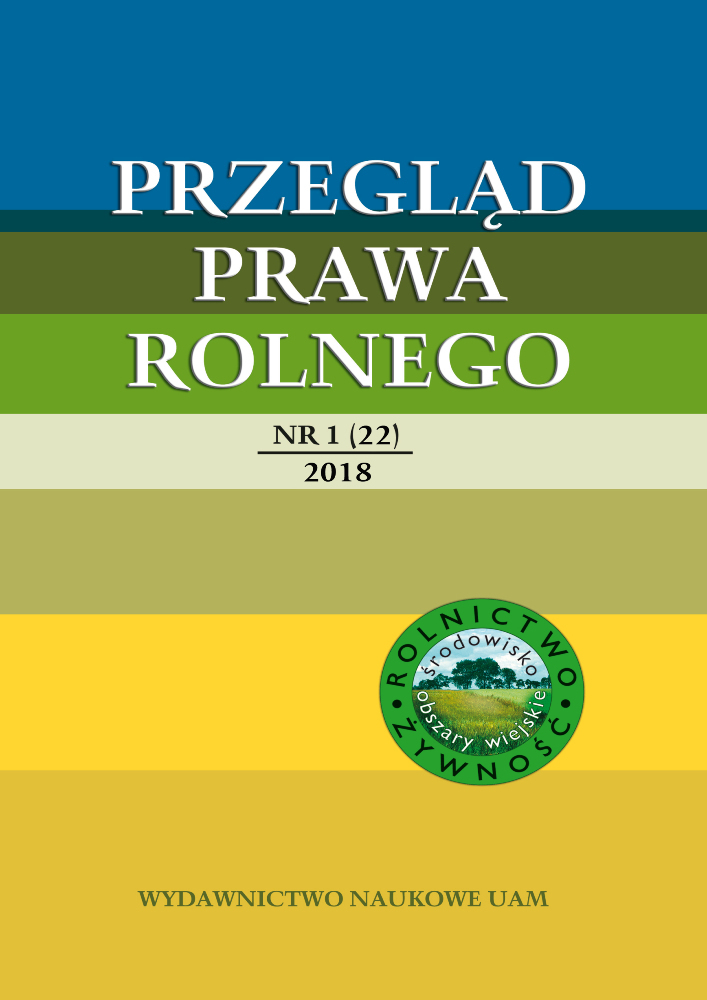Abstract
In Italy the recovery of uncultivated and abandoned land was alive for several years after the first world war, but not always with satisfactory results. The present paper aims to highlight the reasons for the recent renaissance of the Regions’ interest in this issue, which have lately regulated again the allocation of uncultivated and abandoned land under the new framework of a discipline termed “land banks.” Following the example of the regional legislations, which have environmental goals, the State has recently created “land banks” that aim to provide opportunities for young people to gain access to land, especially in Southern Italy, eventually curbing the problem of the ageing of the farmers. The paper will examine the various disciplines, framing them in the context of EU policies for the rational use of natural resources and for the development of marginal rural areas, in order to highlight the key issues involved.
References
Adornato F. (1992), Terre incolte in: Enciclopedia del diritto XLIV.
Alabrese M. (2014), Agricoltura e ambiente: quali strumenti per una gestione sostenibile della risorsa terra in Italia?, in: F. Trentini (dir.), Atti del XIII Congresso Mondiale della UMAU (Riberao Preto, 23-26 settembre 2014), Riberao Preto.
Bellantuono D. (1978), La nuova legge per l’utilizzazione delle terre incolte, abbandonate o insufficientemente coltivate, “Nuovo diritto agrario”.
Cagliero R., Novelli S. (2013), Giovani e senilizzazione nel Censimento dell’agricoltura, “Agriregionieuropa”.
Carbone A., Corsi A. (2013), La riforma della PAC e i giovani, “Agriregionieuropa”.
Carrozza A. (1978), L’assegnazione di terre, in: N. Irti (dir.), Diritto agrario italiano, Torino.
Clarizia A. (1994), Terre incolte (concessione di), “Enciclopedia Giuridica”, vol. XXXI.
Costantino M. (dir.) (1978), Commentario alla legge n. 440/1978, “Le nuove leggi civili commentate”, fasc. III.
Cristiani E. (2003), La legislazione sulle terre incolte, in: L. Costato (dir.), Trattato breve di diritto agrario italiano e comunitario, Padova.
De Simone F. (1982), L’assegnazione delle terre incolte, Napoli.
Domenéch Martínez G. (2016), Los banco de tierra en la Comunidad Valenciana, in: E. Ulate Chacon (dir.), Atti del XIV Congreso Mundial de derecho agrario de la UMAU (San José, 11-15 settembre 2016), San José.
Graziani C.A. (1982), Gli aspetti istituzionali della questione fondiaria, “Nuovo diritto agrario”.
Inea (2013), Rapporto sullo stato dell’agricoltura 2013, Roma.
Jannarelli A. (1978), Proprietà e impresa nell’utilizzazione delle terre incolte (a proposito di un recente progetto di legge), “Rivista di Diritto Agrario”, I parte.
Rook Basile E. (1980), Aspetti del censimento e dell’assegnazione delle terre incolte, abbandonate o insufficientemente coltivate, “Rivista di diritto agrario”.
Russo L. (2014), Una nuova stagione per la proprietà fondiaria?, in: Scritti in onore di Luigi Costato, vol. I, Napoli.
Strambi G. (2017), La questione delle terre incolte e abbandonate e le leggi sulle “banche della terra”, “Rivista di diritto agrario”.
License
According to the policy of implementing the CC license at the Adam Mickiewicz University in Poznań and the conditions set out in the license for works with the obligation to grant CC sublicenses.
ARTICLES ARE LICENSED UNDER A CREATIVE COMMONS:






